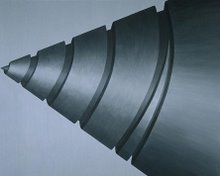




Veil: Veiling, Representation and Contemporary Art
Edited by David A. Bailey and Gilane Tawadros
'This inventive and most innovative contribution to the critical discourse on the veil demonstrates the latest developments in visual studies and cultural theory, at a time when a neo form of Orientalism has resurfaced with full force. A must for students of contemporary visual culture, anthropology, history, as well as the literary discplines.'
Professor Salah Hassan
Chair of Art History,
'Finally a work that begins to do justice to the veil's layered meanings and protean transformations, through history down to our day - a very welcome publication.'
Leila Ahmed
Professor of Women's Studies in Religion,
Veil is the first publication to explore the representation of the veil - one of the most powerful symbols in contemporary visual culture - and serves as an essential starting point to establish a new international dialogue. Extending possible interpretations of the veil and investigating the ambiguities and paradoxes expressed in contemporary arts practice, it provides both a social and an historic context to the veil's multilayered symbolism.
Alongside newly commissioned essays by leading international scholars and works by contemporary visual artists, key historical texts trace a trajectory of writings across religions, cultures, genders and ages to reflect the breadth of conflicting and constantly shifting attitudes towards the veil.
For Al-Ani, too little effort was made in the Western media to place the conflict in an informed historic context. She felt that the ‘site’ of the war was represented as a place with no history, no population and no future. This prompted her to make Untitled (Gulf War work) 1991, consisting of 20 small black and white photographs. By appropriating images from a number of recognisable genres: the archive, the family snapshot, the portrait, reportage, she presents what she describes as an ‘alternative’ history.
In his book The Colonial Harem, Malek Alloula examines postcards of Algerian women produced during the French occupation and compares the gaze of the veiled woman with that of the photographer’s: ‘Thrust in the presence of a veiled woman, the photographer feels photographed; having himself become an object-to-be-seen, he loses initiative: he is dispossessed of his own gaze.’[1] It is this relationship between the viewer/photographer and the veiled woman which informs an ongoing body of work by Al-Ani exploring the Western fascination with the image of the veil. The work explores the myth of the subjugated and sexualised ‘Oriental’ woman as object and successfully unnerves the viewer as they face the unyielding glare of Al-Ani’s subjects. Al-Ani challenges the viewer’s perceptions by offering alternative narratives.
In much of her recent video work Al-Ani explores the construction of narrative, often using the voice as a tool, and her interest in staging and performance, hierarchy and power is apparent. Memory and word games act as a starting point for her. In the installation A Loving Man, 1996-9, five women follow a pattern of speech appropriated from the children’s memory game ‘Mrs Brown went to town, and bought...’, whereby a list is repeated and added to by each participant in turn. In this instance the components of the ‘game’ are phrases based upon each woman’s relationship with the ‘loving man’ of the title. The work is not scripted or directed by the artist, allowing for greater elements of risk and spontaneity to emerge. Similarly, in the installation She Said, 2000 we see a group of women whispering to each other, using the convention of the game ‘Chinese Whispers’. By borrowing existing structures of games and play in her work, Al-Ani investigates the unfolding relationships between the participants, and the way in which communities pass oral histories from generation to generation.
1] Malek Alloula, The Colonial Harem, Manchester University Press, 1987





No comments:
Post a Comment